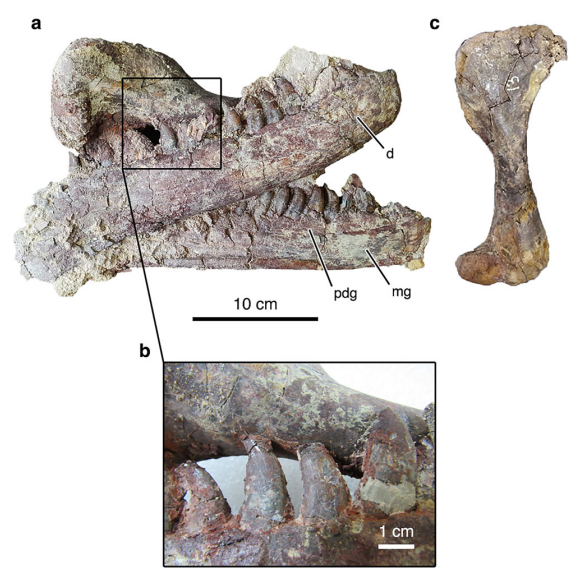A tiny particle that smashed into Earth with a record-shattering energy of 220 petaelectronvolts could be the last scream of an evaporating black hole.
According to a new theoretical paper, the 2023 neutrino event named KM3-230213A can be explained by a burst of Hawking radiation emitted as a primordial black hole puffed into nothing.
Moreover, physicists Alexandra Klipfel and David Kaiser of the Massachusetts Institute of Technology show that the same mechanism can explain other high-energy neutrino events.
Related: It’s Official: ‘Ghost Particle’ That Smashed Into Earth Breaks Records
This would mean that high-energy neutrino events could be the first observational evidence for Hawking radiation.

Moreover, because the work relies on the assumption that primordial black holes make up the majority of the dark matter that fills the Universe, the results offer a partial solution to another mystery.
“It turns out there’s this scenario where everything seems to line up, and not only can we show that most of the dark matter [in this scenario] is made of primordial black holes, but we can also produce these high-energy neutrinos from a fluke nearby primordial black hole explosion,” Klipfel says. “It’s something we can now try to look for and confirm with various experiments.”
Neutrinos are among the most abundant particles in the Universe. They’re produced in huge numbers under energetic circumstances, like stellar fusion or supernova explosions. But they have no electric charge, their mass is almost zero, and they barely interact with other particles they encounter. In fact, hundreds of billions of neutrinos are streaming through your body right now.

frameborder=”0″ allow=”accelerometer; autoplay; clipboard-write; encrypted-media; gyroscope; picture-in-picture; web-share” referrerpolicy=”strict-origin-when-cross-origin” allowfullscreen>
This makes neutrinos almost impossible to detect, but now and again, they smack into another particle in a way we can detect. The energy they carry is thought to be linked to the mechanism that produced them, with more energetic events producing more energetic neutrinos.
However, at 220 petaelectronvolts, KM3-230213A really was extraordinary. The previous record-holder had an energy of just 10 petaelectronvolts.
This obviously raised some questions about the engine that produced KM3-230213A. One possibility is that it was a type of event that we haven’t seen before.
This brings us to primordial black holes, which are theorized to have formed from quantum fluctuations in spacetime in the first second after the Big Bang. We’re yet to confirm the existence of these strange objects; in fact, according to theory, they ought to have self-destructed pretty quickly.
This is because scientists think black holes could emit something called Hawking radiation, which is generated by quantum effects near the event horizon. The smaller the black hole, the higher the energy of the Hawking radiation it emits. Eventually, the black hole evaporates completely, exploding in a puff of particles.

Klipfel and Kaiser hypothesized that, if even a proportion of the dark matter in the Universe consists of primordial black holes, then some primordial black holes might still be hanging around today, heading for their eventual doom.
Related: Physicists Simulated a Black Hole in The Lab, And Then It Began to Glow
Their question was: could KM3-230213A and a handful of other PeV neutrinos be explained by the Hawking radiation emitted as these black holes die? The pair calculated the amount of Hawking radiation that should be emitted by a shrinking black hole, concluding with its death.
They found that in its final nanosecond of life, a dying primordial black hole around the mass of an asteroid should emit around one sextillion neutrinos with energies in the range of that observed in KM3-230213A.

frameborder=”0″ allow=”accelerometer; autoplay; clipboard-write; encrypted-media; gyroscope; picture-in-picture; web-share” referrerpolicy=”strict-origin-when-cross-origin” allowfullscreen>
For a neutrino with KM3-230213A’s energy signature to collide with Earth, though, the explosion would need to happen within 2,000 astronomical units of Earth, or about 3 percent of a light-year. That’s inside the Oort cloud, the giant sphere of small rocks that defines the gravitational boundary of the Solar System.
It could happen, the researchers found, with a probability of just under 8 percent.
“An 8 percent chance is not terribly high, but it’s well within the range for which we should take such chances seriously – all the more so because so far, no other explanation has been found that can account for both the unexplained very-high-energy neutrinos and the even more surprising ultra-high-energy neutrino event,” Kaiser says.
Meanwhile, the lower-energy events in their research could be a sort of background hum of more distant primordial black holes popping like tiny balloons.
To make this even more fun, a completely different paper dropped just a few days before Klipfel and Kaiser’s work, predicting that the detection of an exploding primordial black hole would take place with a probability of 90 percent within a decade. Wouldn’t it be super cool if our neutrino detectors had already been doing it, all this time?
This is a significant claim that requires much more evidence before scientists can claim that we’ve detected Hawking radiation and primordial black holes. It does really feel, though, that it may just be a matter of time now.
The research has been published in Physical Review Letters.








